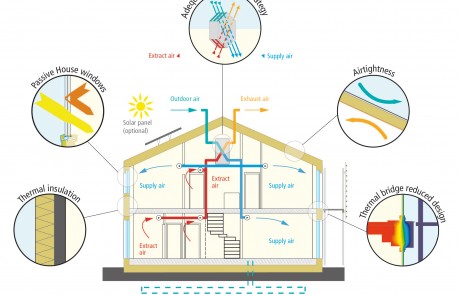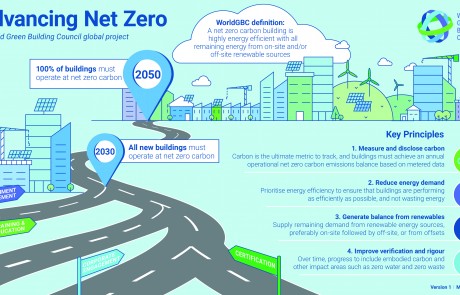Buildings perform a wide array of services to us humans, from the most fundamental service of shelter from the natural elements to our most complex physical and even psychological needs for comfort and health.
The extent to which buildings have evolved to provide for these needs over the course of history has been in some ways great, and in others found wanting, depending on the building in question. Buildings that perform these services – remaining structurally sound; keeping you dry always, warm in the winter, cool in the summer; and free of drafts, volatile organic compounds (VOCs) and other air quality issues – to a high level of quality without compromising the natural environment on which our society depends, stand apart from the majority of construction today, thus they are aptly named high performing buildings.
You might have heard about passive house buildings – those that require 90% less energy to heat and cool, and which maintain even, comfortable temperatures year round; or net zero buildings – those that generate enough renewable energy on site to cover all of the heating, cooling, and electrical needs of the occupants. These buildings absolutely can be high performing buildings. But we need a better rubric, because a Passive House built with energy-intensive concrete or a Net Zero building that is uncomfortable, ugly, or full of toxic materials… aren’t checking all the boxes. Therefore to truly create a high performance building, we must combine a variety of strategies, like Passive House, Net Zero, the Living Building Challenge, Energy Star, R-2000, LEED, and other well-known building performance standards, while making smart decisions to keep these buildings affordable, just, and attainable for as many people as possible.
We in the high performance building industry do a lot of assuming that our clients know what “high performance” means, when really it’s worth more clearly defining – for ourselves as much as for them.
Our rubric for high performance buildings is simple. A high performance building should:
- Be long-lasting and durable, able to last for several generations by properly managing moisture (the leading cause of building rot, mold, and failure) while not sacrificing energy efficiency.
Be composed of materials which or not toxic to the environment or to the people living inside the building, require little energy to produce, and can recycled, composted, reused, or otherwise returned to a natural cycle at the end of their lifetime.
- Use almost no energy to heat, cool, and electrify the building, relying instead on design elements like airtightness, elimination of thermal bridges, optimization of solar gains and natural daylight through window placement and performance, improved retention of heat with super-insulation, and utilization of filtered fresh air heat recovery ventilation.
Be designed for deconstruction, which means avoiding the installation of layers of the enclosure which are either toxic or inseparable when the building is decommissioned, rendering them unfit for proper recycling or reuse.
- Offer superior indoor air quality and comfort by simply following all of the principles stated above.
- Be constructed with precision and quality control, eliminating human error to the maximum extent possible by avoiding exposure to natural elements during the construction, and by using consistent processes and methods typical of the assembly line innovation of the early 20th century, combined with other automated assistance from computer-aided design and fabrication characteristic of the third industrial revolution,
- Be beautiful and inspiring, for the buildings that truly last are the ones that are loved by the people that use them.
The key to so many of these high performance building principles lies in the building enclosure – the structural, insulated shell of the building. As times change and owners remodel the interior and exterior of the building, it is the building envelope that needs not change if it is well designed. It is often said that the best design is invisible – so it goes with a high performance building.




